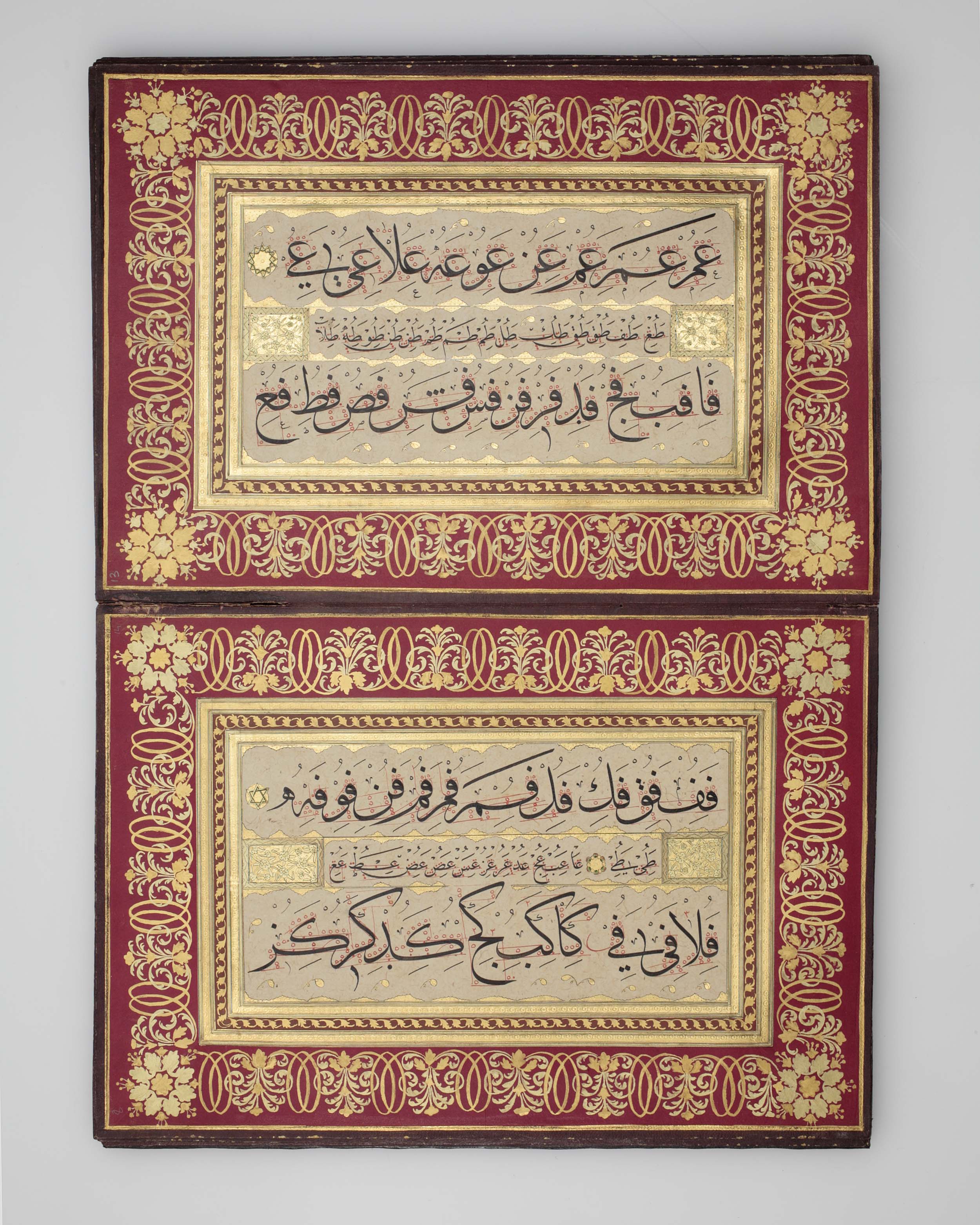Mehmed Şevkî Efendi on:
[Wikipedia]
[Google]
[Amazon]
Qur'an copied by Mehmed Şevkî Efendi. Sakıp Sabancı Museum
 Mehmed Shevki Efendi ( ota, محمد شوقي افندي;
Mehmed Shevki Efendi ( ota, محمد شوقي افندي;
Online:
/ref>
 Mehmed Shevki Efendi ( ota, محمد شوقي افندي;
Mehmed Shevki Efendi ( ota, محمد شوقي افندي; Modern Turkish
Turkish ( , ), also referred to as Turkish of Turkey (''Türkiye Türkçesi''), is the most widely spoken of the Turkic languages, with around 80 to 90 million speakers. It is the national language of Turkey and Northern Cyprus. Significant smal ...
: ''Mehmed Şevki Efendi''; 1829 Kastamonu–1887 Istanbul) was a prominent Ottoman calligrapher
Calligraphy (from el, link=y, καλλιγραφία) is a visual art related to writing. It is the design and execution of lettering with a pen, ink brush, or other writing instrument. Contemporary calligraphic practice can be defined as "t ...
. He is known for his Thuluth
''Thuluth'' ( ar, ثُلُث, ' or ar, خَطُّ الثُّلُثِ, '; fa, ثلث, ''Sols''; Turkish: ''Sülüs'', from ' "one-third") is a script variety of Islamic calligraphy. The straight angular forms of Kufic were replaced in the new scr ...
- Naskh works, and his style developed into the ''Shevki Mektebi'' school, which many contemporary calligraphers in the style take as a reference.
Life and career
Born inKastamonu
Kastamonu is the capital district of the Kastamonu Province, Turkey. According to the 2000 census, population of the district is 102,059 of which 64,606 live in the urban center of Kastamonu. (Population of the urban center in 2010 is 91,012.) The ...
, a town near the Black Sea, in 1829, Mehmed Shevki Efendi was the son of Ahmad Agha from Tajc. He was sent to Istanbul at a young age, where he was raised by his uncle.
He received his earliest formal training from his uncle, Mehmed Hulûsi Efendi (d. 1894) and obtained a Diploma at the age of fourteen. He was trained in the ''thuluth'' and the ''naskh'' scripts. Later, his uncle wanted him to study with a more experienced master, and sought to apprentice him to Kazasker Mustafa Izzet Efendi Kazasker Mustafa Izzet Efendi ( ota, مصطفى عزت, Modern Turkish: ''Kazasker Mustafa Izzet Efendi'') (alternative: Kadiasker Mustafa Izzet Efendi, Seyyid Mustafa) (b. 1801 Tosya – d. 16 November 1876 Istanbul), was an Ottoman composer, ne ...
. However, the boy refused to study with any master, other than his uncle. Ultimately, he taught himself advanced techniques from calligraphic works of Hâfiz Osman
Hâfiz Osman ( ota, حافظ عثمان Modern Turkish: ''Hâfız Osman'') (1642–1698) was an Ottoman calligrapher noted for improving the script and for developing a layout template for the hilye which became the classical approach to page des ...
and other great calligraphers. By remaining with his uncle, rather than joining a different school, Mehmed Şevkî had the freedom to develop his own style. This style became known as ''û Şevki mektebi eb''. He certified a number of calligraphers, who went on to enjoy exceptional careers including Mohammad Hosni
Mohammad Hosni, also known as Muhammad Kamal Hosny Al Baba ( ar, محمد حسني البابا), was a Syrian master calligrapher, at the Royal Institute of Calligraphy in Cairo. He was one of the last of the classical calligraphers, who is noted ...
.
Şevkî Efendi was the last in a long line of calligraphers, beginning with Seyh Hamdullah in the 15th century, who refined and improved the '' sülüs'' and '' naskh'' scripts. He achieved a "height of perfection never attained previously, nor surpassed since."
He taught penmanship in the Ministry of War, where he trained military scribes and also worked in several schools. He also taught calligraphy to the sons of Sultan Abdulhamid II.
He died on 7 May, 1887 following a stroke and was buried next to his uncle, Hulûsi Efendi, in the Merkezefendi Cemetery. He was survived by three daughters and a son.
Work
He wrote 25 copies of the Q'ran and also produced many personal prayer books. He is the author of the work, ''The Thuluth & Naskh Mashqs.'' His work also includes calligraphic compositions, which he signed "Muhammed Shawki".Bloom, J. and Blair, S.S. (eds), ''Grove Encyclopedia of Islamic Art & Architecture'', Volume 1, Oxford University Press, 2009, p. 475; Christies AuctionsOnline:
/ref>
See also
*Culture of the Ottoman Empire
Ottomans culture evolved over several centuries as the ruling administration of the Turks absorbed, adapted and modified the various native cultures of conquered lands and their peoples. There was influence from the customs and languages of Isla ...
*Islamic calligraphy
Islamic calligraphy is the artistic practice of handwriting and calligraphy, in the languages which use Arabic alphabet or the alphabets derived from it. It includes Arabic, Persian, Ottoman, and Urdu calligraphy.Chapman, Caroline (2012). '' ...
*List of Ottoman calligraphers
The following is an incomplete List of Ottoman Calligraphers:
15th–16th century
*Hâfiz Osman
*Seyyid Kasim Gubari
* Ahmed Karahisari
*Sheikh Hamdullah
* Kahdi Mahmud Efendi (d. 1575)
* Ahmed Pasa (d. 1611) son of Kahdi Mahmud Efendi
* Mustafa ...
*Ottoman art
Turkish art refers to all works of visual art originating from the geographical area of what is present day Turkey since the arrival of the Turks in the Middle Ages. Turkey also was the home of much significant art produced by earlier cultures, ...
References
{{DEFAULTSORT:Mehmed Sevki Efendi Ottoman culture Calligraphers from the Ottoman Empire 1829 births 1887 deaths Muslim artists 19th-century artists from the Ottoman Empire